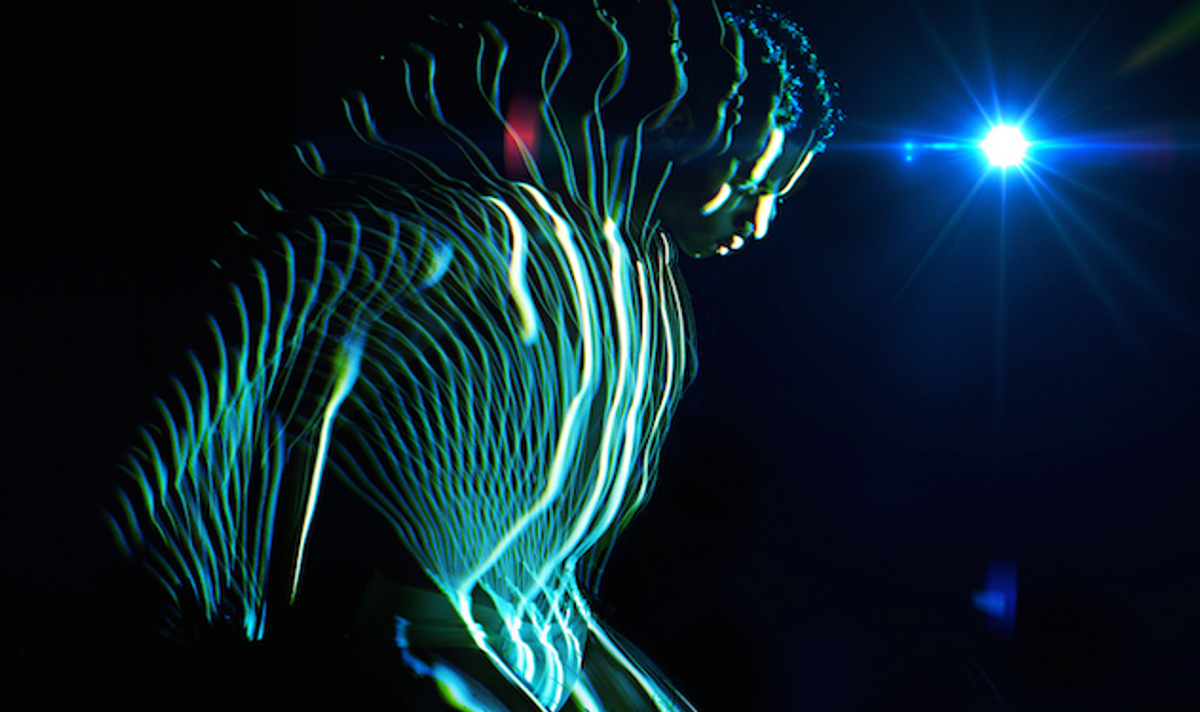
British choreographer Wayne McGregor uses science to create his singular brand of propulsive dance. This month, his company comes to New Jersey
March 14 2014 12:44 PM EST
December 06 2017 9:26 PM EST
By continuing to use our site, you agree to our Private Policy and Terms of Use.

British choreographer Wayne McGregor uses science to create his singular brand of propulsive dance. This month, his company comes to New Jersey
'AtomosLandscape3' | Photo by Rick Guest with Olivia Pomp
Five years ago, at a theater in San Diego, Wayne McGregor was creating a new dance, as he'd been doing since 1992 when he founded his London-based dance company, Random Dance, at age 22. What made that rehearsal different was that it was filmed by a dozen cameras and observed by a dozen neuroscientists who were studying how hyper-coordinated organisms (i.e., McGregor's dancers) make cognitive decisions when assigned certain physical tasks.
It wasn't McGregor's first time fusing dance and science. In 2003, he was a research fellow in experimental psychology at Cambridge University and, in the decade since, has churned out a number of science- and technology-inspired works. In the process, he's become one of the world's most in-demand choreographers and one of the few from the contemporary realm to be enthusiastically embraced by the ballet establishment (he was a controversial but now celebrated choice as resident choreographer at the Royal Ballet).
And the experimentation continues. Random Dance now has a research division and McGregor still collaborates with scientists and engineers from a number of universities. He's like a dance equivalent of Bill Nye crossed with Alfonso Cuaron--making scientific principles fun and digestible while pioneering new technology to serve his artistic needs.
The latest iteration of McGregor's investigation is Atomos, which has its U.S. premiere on March 15 and runs through March 23 at Montclair State University in New Jersey.
The work is inspired by an iconic sci-fi film from the 1980s, not that you'd notice and not that you're supposed to. The point is that a source of inspiration can be just that - a mere catalyst for a new creative journey.
"It's something Wayne is very fond of," says dancer Jessica Wright, who has been with the company for over six years. "He wants to take something he loves and scavenge or cannibalize it and grow something else."
It's a philosophy that typifies most of his works, which are never literal representations of the research that inspired them. McGregor may include scientific theory as part of his creative toolkit but the final product is a piece of art, not a dissertation.
Wright, whose blond pixie cut belies a ferociousness onstage, was one of the dancers rolling around in San Diego and is an enthusiastic disciple of McGregor's knotty method, which requires his dancers to translate complex directions and information into their bodies. For Atomos, he disrupted the process further by throwing an interactive computer into the mix. Working with McGregor demands as much mental virtuosity as physical.
If all this sounds a bit technical and cold, that may explain some of the criticisms of McGregor's dances, which have been accused of being machine-like to an extreme and relentlessly aggressive, with too little moments of genuine softness (although the Alvin Ailey dance company brought an appealing humanity to McGregor's hard edges when they premiered his Chroma in December).
It seems that some people are having a stronger emotional connection to Atomos, though, which was well received when it premiered in London in October. Even the music, by A Winged Victory for the Sullen has "its own emotional arc," says Wright. But for the most part, the relationships between the dancers remain characteristically frigid and ambiguous while technology is exalted: In one section, screens descend for a little 3D action, an exciting breakthrough for dance.
McGregor has never been concerned with creating artificial drama onstage; his interest is more artificial intelligence. There is no other choreographer today as rigorously engaged in exploring the relationship between the body and technology, which of course contains its own inherent drama. After all, as the film Her illustrated so eerily and elegantly, the two are getting closer and closer.
But McGregor's works are intriguing--and maybe even empowering--because he never subjugates the body to technology. The body holds its own. As Wright points out: "He always says, 'The body will speak for itself.' "
Wayne McGregor | Random Dance performs 'Atomos' at Montclair State University, March 15-23. Visit Peak Performances for times and ticket information.
Listen to A Winged Victory for the Sullen's "Atomos VII" below:
Want more breaking equality news & trending entertainment stories?
Check out our NEW 24/7 streaming service: the Advocate Channel!
Download the Advocate Channel App for your mobile phone and your favorite streaming device!